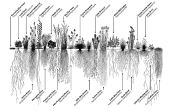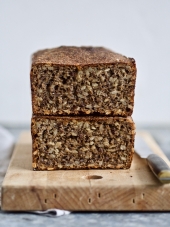Great ideas! To answer a few questions I saw posed:
I live nearby, but am not in one of the affected homes, so this is more of a "want to help" situation. That said, it wouldn't surprise me if this was happening more broadly as well (I live nearby, so this isn't purely selfless, I must admit).All the houses in the neighborhood are slab-on-grade.Snow is relatively rare around here.Buda gets its water from several places. Much is pumped from the ground, some is piped in from elsewhere. Groundwater pollution is a consideration.
Salt cedar is interesting, I'll need to look into it. As I read through these responses it got me thinking more about the kinds of root structures that would be helpful here. It seems likely that plants that have the shallow aggressive roots can get very thirsty, but may be drinking from the wrong water source in this case (too near the surface). Thirsty taprooty trees might be more fitting here.
Hadn't considered the Growies forum, but that's an excellent idea and I'll put something over there as well.
Going for a full-on food forest would be fantastic! Since the most likely mass-planting areas are the drainage/retention areas, though (and city-owned), not sure I could swing that. Maybe get it planted to some initial trees, and other useful goodies just, you know, happen to appear over time. I imagine lots of folks go on walks around there. ;)
In terms of who is to blame and who should pay, at this point I think it's too far past (over a decade) to establish blame, and frankly it doesn't really matter much. The people will pay, either directly or through taxes (or reduction in property value). My hope here is that whatever solution we come up with is long lasting (dare I say, PERMA-nent?) and cheap, hence my focus on well-chosen plants.
The suggestion to pump from this problematic layer into something usable like a public pool is definitely intriguing. Looking at the maps, the only area downhill is drainage into Garlic Creek. Nearby there does seem to be a new housing development going in (east of Whispering Hollow). Not sure if a pool of any sort is planned there, but that's certainly something to consider.
Weeping willows might work. Shrubs are definitely fair game as well! I wish we could grow blueberries and other acid-loving plants here, but it's tricky (limestone = fairly alkaline soil... 8.5 in my yard last time I tested, it ain't pretty). But still, I think there are likely lots of good options that would be able to handle alkaline clay soil.
Thanks for the ideas everyone! Please keep them coming. :)
[EDIT] - Growies thread here:
https://permies.com/t/176819/THIRSTY-tappy-plants-alkaline-clay








